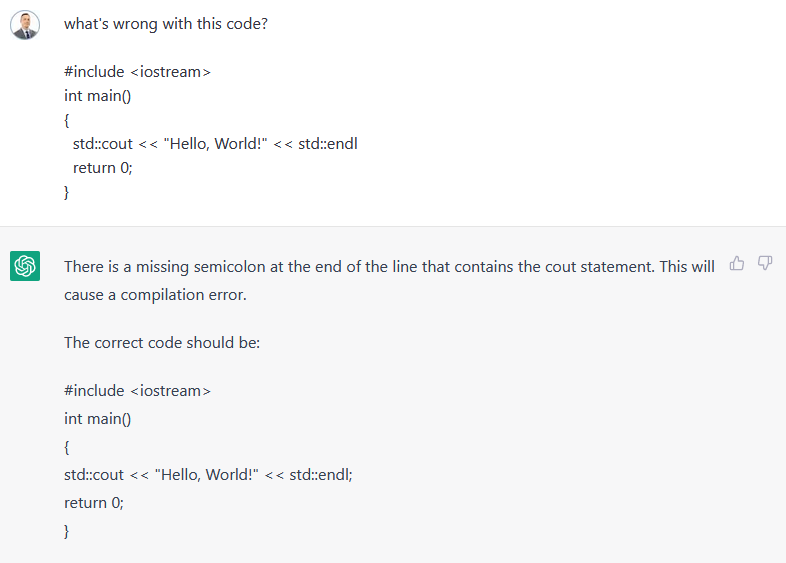In this third article in the series of Life Lessons of a Software Engineer, we explore the lesson of thoroughly testing your code.
Testing your code is an important part of making software. It helps you make sure that your code is reliable, efficient, and bug-free. By writing and running tests, you can find issues early on and fix them, which will save you time and money in the long run.
In this article, we’ll talk about the best ways to test your code, including how to write and run tests, use a variety of testing methods, and make your tests run automatically. We’ll also talk about how ChatGPT, an OpenAI-trained large language model, can be used as a debugging tool to find and fix problems in code. So, keep reading to learn more about how to test your code well and make your software more reliable.
Let’s talk about some specific things you should do when writing and running tests.
Test Driven Issues
When you test early and often, you run tests as soon as you write some code, instead of waiting until you have done a lot of work. This helps find issues early on, before they get worse and take more time and effort to fix. As you continue to work on your code, it’s also a good idea to run tests typically to make sure that the changes you make don’t cause any new issues.
100% Code Coverage
It’s important to write tests that cover all parts of your code, including all possible input scenarios and edge cases. This helps make sure that your code is correct and reliable in a wide range of situations.
For example, if your code handles user input, you should test it with both correct and incorrect input to make sure it works correctly in both cases.
Testing Techniques
There are a lot of different kinds of tests you can use to make sure your code works.
Some common testing techniques include:
- Unit tests look at a small piece of code, such as a function or method, on its own. They test how this unit works by itself to make sure it works right.
- Integration tests look at how separate pieces of code work together. They test how the different parts of your code work together to make sure they work as expected.
- Acceptance tests look at how your code works as a whole from the user’s point of view. They check to see if your code meets the user’s needs and expectations.
Automate Testing
In the long run, automating your tests can save you a lot of time and work. By using a testing framework, you can easily run your tests regularly and make sure your code stays reliable and bug-free. NUnit or XUnit for C#, JUnit for Java, PyTest for Python, MochaJS for JavaScript, and RSpec for Ruby are some well-known frameworks for testing.
These frameworks give you the tools and resources you need to write and run tests. They often have things like test runners and assertion libraries.
Debugging & Leveraging Artificial Intelligence
When it comes to finding and fixing bugs in your code, there are a lot of debugging tools that can be very helpful. GDB for C and C++, LLDB for Swift, and the Chrome DevTools for JavaScript are all popular debugging tools.
You can step through your code line by line, look at variables and data structures, and set breakpoints to stop the program from running at certain points. They can also tell you what went wrong and where it happened by giving you error messages and stack traces.

ChatGPT is a tool that can be very helpful when you need to fix bugs in source code.
ChatGPT is a big language model that was trained by OpenAI. It can help with many things, like finding bugs in code.
It can help you find problems in your code and fix them by giving you ideas and explanations for why certain problems might be happening.
To use ChatGPT for debugging, all you have to do is describe the issue and include any relevant code snippets. Then, ChatGPT will look at your code and give ideas for possible solutions. It can also give you explanations and background information to help you figure out what’s wrong and how to fix it.
Wrapping Up
Testing software thoroughly is an important part of making software. By following best practices, like writing tests that cover all parts of your code, automating your tests, and using debugging tools, you can make sure that your code is reliable and free of bugs. Also, new AI technologies in IDEs and tools like ChatGPT can help you find and fix bugs in your source code by making suggestions and giving you explanations.
I hope this article was helpful for you. What are your thoughts on how the importance of writing thoroughly tested code?


10 Essential Life Lessons for Software Engineers – Rob Kennedy
[…] Maximizing Quality and Efficiency: The Top 5 Testing Practices for Your Code, Including ChatGPT […]